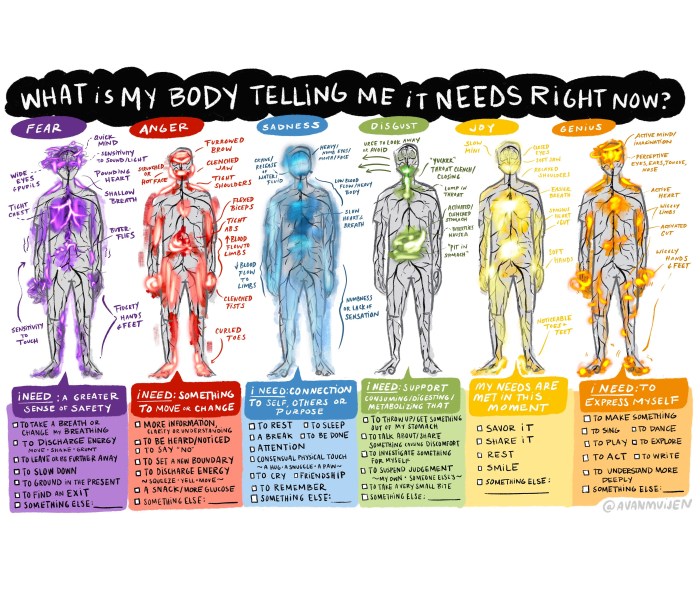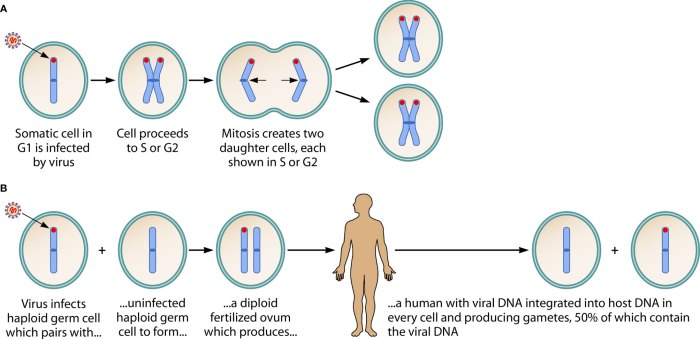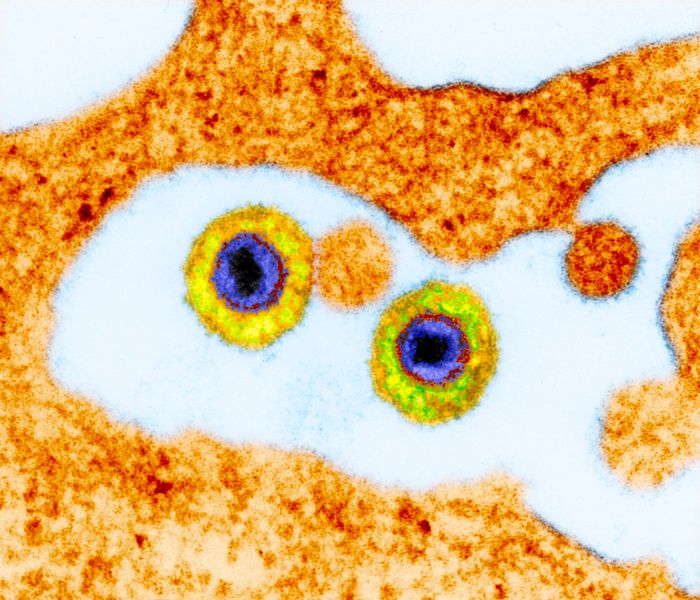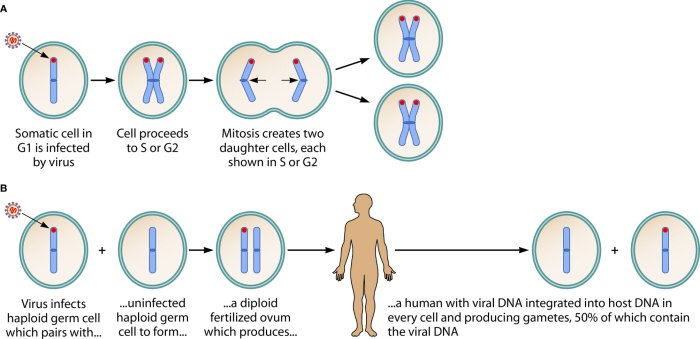Herpes rash on body can be a confusing and sometimes distressing condition. It’s important to understand the different types of herpes that can cause a rash, the typical locations on the body, and the various symptoms. This guide will explore the causes, symptoms, diagnosis, treatment, prevention, and potential complications associated with herpes rashes.
This comprehensive overview will provide valuable information to help you better understand herpes rashes. From identifying the characteristic appearance to distinguishing them from other skin conditions, we’ll delve into the nuances of this often-misunderstood health issue.
Introduction to Herpes Rash on Body
A herpes rash on the body is a skin eruption caused by the herpes simplex virus (HSV). Characterized by clusters of small, fluid-filled blisters, it often appears in painful, red, and inflamed patches. These blisters eventually rupture, forming crusts that gradually heal over time. Understanding the various types of herpes and the areas most commonly affected can aid in accurate diagnosis and appropriate treatment.Herpes simplex virus, the culprit behind these rashes, comes in two primary types: HSV-1 and HSV-2.
While both can cause similar symptoms, HSV-1 is more frequently associated with oral herpes (cold sores), and HSV-2 is more commonly linked to genital herpes. However, either type can manifest on areas beyond their typical location.The locations on the body most commonly affected by a herpes rash vary depending on the type of herpes and individual factors. The rash can occur anywhere on the skin’s surface, but certain areas are more susceptible due to factors such as skin friction or contact with the virus.
Common Locations of Herpes Rash
| Body Area | Typical Appearance | Possible Symptoms |
|---|---|---|
| Face | Small, grouped blisters around the mouth or nose. May appear as painful, red sores. | Burning, itching, tingling sensation before blisters appear; pain, swelling, and sensitivity around the sores. |
| Torso | Blisters may appear in clusters on the chest, back, or abdomen. The rash can be widespread, covering a larger area. | Painful, red patches with groups of blisters; mild to severe itching and burning. Flu-like symptoms (fever, headache, body aches) may accompany the rash in some cases. |
| Genitals | Clusters of small, fluid-filled blisters on or around the genitals, buttocks, or inner thighs. | Severe itching, burning, pain during urination or sexual intercourse; pain, swelling, and tenderness around the blisters. Flu-like symptoms may accompany the rash in some cases. |
A patient experiencing a herpes rash should consult a healthcare professional for accurate diagnosis and appropriate treatment. Early intervention can help manage symptoms and prevent complications. Self-treating can lead to incorrect diagnoses and ineffective treatment.
Symptoms and Diagnosis
Beyond the tell-tale rash, herpes infections manifest with a range of symptoms. Understanding these accompanying signs can aid in early detection and appropriate treatment. Recognizing the diverse presentation of symptoms is crucial for accurate diagnosis and management.Identifying a herpes rash requires a thorough understanding of the associated symptoms and diagnostic methods. Physical examination, coupled with laboratory testing, plays a vital role in differentiating herpes from other skin conditions.
Misconceptions about herpes can hinder timely diagnosis and treatment, thus emphasizing the importance of accurate information.
Common Symptoms Beyond the Rash
Recognizing symptoms beyond the rash itself is key to prompt diagnosis. These accompanying signs can include pain, itching, fever, and swollen lymph nodes. Pain associated with herpes can range from mild discomfort to intense burning or stinging sensations. Itching often accompanies the rash, causing discomfort and potential skin irritation. Fever, a systemic response, can indicate the body’s immune reaction to the infection.
Swollen lymph nodes, appearing as tender lumps near the infected area, further contribute to the overall picture of the infection.
Methods of Diagnosis
Accurate diagnosis relies on a combination of physical examination and laboratory tests. A physical examination involves visual inspection of the affected area, looking for characteristic signs of herpes, such as clusters of small blisters or sores. A doctor may also assess the patient’s overall health, inquiring about recent illnesses or potential exposure to herpes. Laboratory tests, such as polymerase chain reaction (PCR) testing or viral culture, confirm the presence of the herpes simplex virus (HSV) and differentiate it from other skin conditions.
PCR tests identify the viral DNA, while viral cultures grow the virus in a lab setting, both serving as highly effective diagnostic tools.
Common Misconceptions
Several misconceptions surround herpes rashes, leading to delayed diagnosis and unnecessary anxiety. One common misconception is that herpes only manifests as a visible rash. In reality, herpes can present with various symptoms, including those described above. Another misconception is that herpes is solely sexually transmitted. While sexual contact is a common route of transmission, herpes can also be contracted through non-sexual skin-to-skin contact.
Understanding the multifaceted nature of herpes transmission is essential for prevention and treatment. Furthermore, herpes is often perceived as a lifelong condition, which, while true for some individuals, is not universally applicable, and effective treatment strategies are available.
Importance of Seeking Medical Attention
Seeking medical attention for a suspected herpes rash is crucial for several reasons. Prompt diagnosis allows for timely treatment, potentially minimizing the severity and duration of the infection. Early treatment can prevent complications, including the spread of the infection to other parts of the body. Proper management can also significantly reduce the risk of transmission to others.
The presence of other symptoms, such as fever or swollen lymph nodes, may suggest a more severe infection, necessitating medical intervention. In addition, a healthcare professional can offer guidance and support, addressing any anxieties or concerns associated with the diagnosis.
Diagnostic Flowchart
The following flowchart Artikels the steps involved in diagnosing a herpes rash:
| Step | Action |
|---|---|
| 1 | Patient presents with suspected herpes rash. |
| 2 | Physical examination of the affected area. |
| 3 | Assessment of accompanying symptoms (pain, itching, fever). |
| 4 | Medical history review and risk factors assessment. |
| 5 | Laboratory tests (PCR or viral culture) ordered. |
| 6 | Results interpretation by a healthcare professional. |
| 7 | Diagnosis and treatment plan determined. |
Causes and Risk Factors
Herpes rashes, a common skin condition, are caused by specific viruses. Understanding the factors contributing to infection is crucial for prevention and management. Knowing the transmission routes and risk factors empowers individuals to take proactive steps to reduce their vulnerability.A multitude of factors can influence the likelihood of developing a herpes rash. These range from the type of herpes virus involved to individual behaviors and overall health conditions.
Understanding these causes and risk factors provides valuable insights into preventative measures and the appropriate course of action for those already affected.
Viruses Responsible for Herpes Rashes
Herpes simplex virus (HSV) is the primary culprit behind herpes rashes on the body. Two types exist: HSV-1, often associated with oral herpes, and HSV-2, typically linked to genital herpes. However, both types can potentially cause outbreaks in various locations, including the body’s skin. The specific type of herpes virus often influences the location and severity of the rash.
Dealing with a herpes rash on your body can be frustrating, and sometimes the underlying cause might be surprising. While there’s no direct link between herpes and tattoos, it’s important to consider that certain skin conditions, including autoimmune diseases, can sometimes manifest in similar ways. For instance, if you’re wondering about potential connections between skin issues and your overall health, exploring the relationship between tattoos and autoimmune disease here might offer some insights.
Ultimately, consulting a doctor is crucial for accurate diagnosis and appropriate treatment for any skin rash, especially if you have concerns about potential underlying health conditions.
Transmission Methods
Herpes viruses are contagious. Transmission occurs through direct contact with an infected individual, either through skin-to-skin contact or contact with bodily fluids containing the virus. Saliva, genital secretions, and even contaminated objects can facilitate transmission. The virus can remain dormant in the body for extended periods, leading to intermittent outbreaks. This latency period plays a significant role in transmission patterns.
Risk Factors for Herpes Rashes
Several factors elevate the risk of developing a herpes rash. A weakened immune system, such as that experienced during illness or due to underlying conditions, significantly increases vulnerability. Frequent exposure to individuals infected with the virus also contributes to increased risk.
Dealing with a herpes rash can be frustrating. While there’s no cure, exploring natural remedies like potential benefits of ginkgo biloba might offer some relief. Some studies suggest that ginkgo biloba potential benefits of ginkgo biloba could potentially help with inflammation and overall healing, though more research is needed. Ultimately, managing a herpes rash involves a combination of patience and exploring different approaches.
Comparison of Risk Factors for Different Herpes Types
While both HSV-1 and HSV-2 can cause herpes rashes, the risk factors might vary slightly. HSV-1, often associated with oral herpes, is more likely to be transmitted through non-sexual contact, such as sharing utensils or kissing. HSV-2, more frequently linked to genital herpes, typically transmits through sexual contact. However, both types can spread to other parts of the body through direct contact.
Therefore, maintaining good hygiene and practicing safe sexual habits are crucial regardless of the type of herpes.
Risk Factor Table
| Behavior | Risk Increase/Decrease | Reasoning |
|---|---|---|
| Sharing personal items (utensils, towels) with an infected person | Risk Increase | Direct contact with infected fluids can lead to transmission. |
| Having multiple sexual partners | Risk Increase | Increased exposure to the virus. |
| Weakened immune system (e.g., due to illness or medication) | Risk Increase | Reduced ability to fight off the virus. |
| Practicing safe sex (e.g., consistent use of condoms) | Risk Decrease | Reduces the likelihood of direct contact with infectious fluids. |
| Avoiding contact with open sores or blisters of an infected person | Risk Decrease | Minimizes exposure to infectious materials. |
| Maintaining good hygiene (e.g., frequent handwashing) | Risk Decrease | Reduces the spread of the virus. |
Treatment and Management
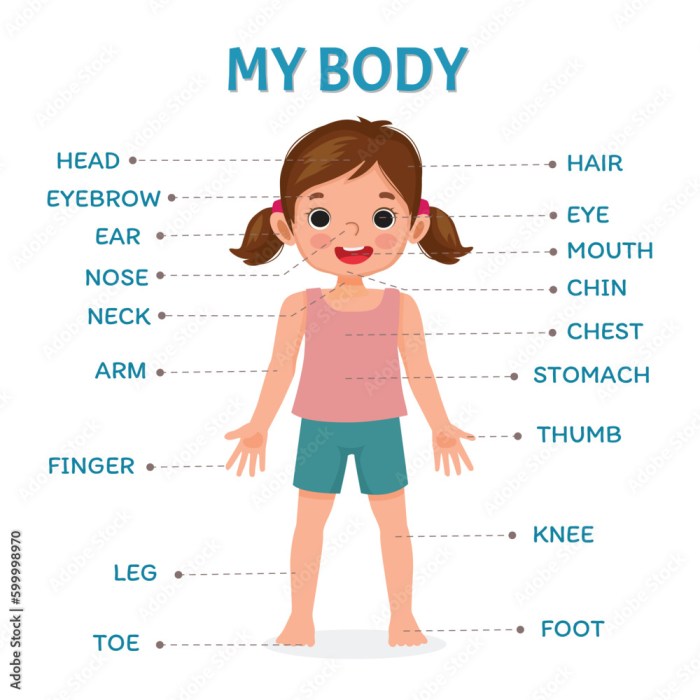
Managing a herpes rash requires a multifaceted approach, combining medical treatments with supportive care and lifestyle adjustments. Understanding the different treatment options and their effectiveness is crucial for managing the condition and minimizing its impact on your life. This section will delve into the various avenues for managing herpes, including antiviral medications, supportive care, and alternative methods.Effective management of herpes involves a comprehensive strategy.
It’s important to understand that while a cure for herpes simplex virus (HSV) doesn’t currently exist, treatments can effectively control outbreaks, reduce symptoms, and minimize the risk of transmission. This comprehensive approach addresses both the immediate discomfort and the long-term well-being of individuals living with herpes.
Standard Treatments
Antiviral medications are the cornerstone of herpes treatment. These medications work by inhibiting the replication of the herpes virus, thereby reducing the duration and severity of outbreaks. Commonly prescribed antiviral medications include acyclovir, valacyclovir, and famciclovir. These drugs are often taken orally and can be very effective in suppressing the virus and preventing recurrent outbreaks. The specific medication and dosage are determined by a healthcare professional based on individual needs and the severity of the infection.
Supportive Care
Supportive care plays a vital role in managing herpes symptoms. Pain relief measures, such as over-the-counter pain relievers like ibuprofen or acetaminophen, can help alleviate discomfort associated with the rash. Applying cool compresses to the affected area can also provide soothing relief. Maintaining good hygiene practices, such as gentle cleansing of the affected area with mild soap and water, is essential to prevent secondary infections.
Keeping the affected area clean and dry is crucial for healing.
Alternative Methods
While antiviral medications remain the standard treatment, some individuals explore alternative methods to manage herpes outbreaks. These methods, however, should be considered complementary to, not replacements for, medical treatments. Examples include applying topical ointments or creams to the affected area, or using natural remedies such as aloe vera or chamomile. It’s important to note that the effectiveness of these alternative methods is not always scientifically proven.
Always consult a healthcare professional before trying any alternative remedies. Lifestyle changes, such as stress management techniques and a balanced diet, may also play a role in managing outbreaks. Reducing stress through relaxation techniques, exercise, or meditation may help.
Preventing Spread, Herpes rash on body
Preventing the spread of herpes is paramount, especially during outbreaks. Avoiding contact with open sores or lesions is critical. Maintaining good hygiene, including handwashing, is essential. Sexual partners should be informed about the condition and use appropriate precautions to minimize the risk of transmission. Open communication with partners is vital for managing herpes safely.
Treatment Options Table
| Treatment | Effectiveness | Side Effects |
|---|---|---|
| Acyclovir | Generally effective in reducing outbreak duration and severity. | Potential side effects include nausea, headache, and dizziness. Rarely, more serious side effects may occur. |
| Valacyclovir | Similar effectiveness to acyclovir, but often with a faster onset of action. | Potential side effects include nausea, vomiting, and diarrhea. |
| Famciclovir | Effective in reducing outbreak duration and severity. | Potential side effects include headache, nausea, and diarrhea. |
| Topical ointments/creams | Limited effectiveness in reducing outbreak duration and severity, often used for symptomatic relief. | Potential side effects depend on the specific product. |
| Natural remedies (e.g., aloe vera, chamomile) | Limited scientific evidence for effectiveness. | Generally considered safe, but potential interactions with medications are possible. |
Prevention and Support: Herpes Rash On Body
Living with herpes can be challenging, but proactive measures and a supportive network can significantly improve quality of life. Understanding the ways to reduce the risk of transmission and fostering a supportive environment are crucial for managing the emotional and physical aspects of the condition.Effective prevention and strong support systems play a vital role in managing the emotional and physical challenges associated with herpes.
This section details strategies for reducing transmission risk, emphasizing the importance of a healthy immune system, and providing access to resources for support and education.
Preventive Measures
Taking proactive steps to reduce the risk of herpes transmission is essential. These measures involve both personal hygiene and safe sexual practices. Maintaining good hygiene, including regular handwashing, can help prevent the spread of the virus. Avoiding contact with open sores or lesions is also important. Consistent and correct use of condoms during sexual activity significantly reduces the risk of transmission.
Open communication with sexual partners about herpes status is paramount for informed decision-making and responsible sexual health practices.
Maintaining a Healthy Immune System
A robust immune system is crucial for overall health and plays a vital role in managing herpes outbreaks. A healthy lifestyle contributes significantly to immune function. A balanced diet rich in fruits, vegetables, and lean proteins, coupled with regular exercise and sufficient sleep, supports a strong immune response. Avoiding excessive stress and prioritizing stress-reduction techniques can also positively influence immune function.
Individuals with herpes should take proactive steps to bolster their immune systems through healthy lifestyle choices.
Support Groups and Educational Resources
Connecting with support groups and accessing reliable educational materials can be invaluable for individuals living with herpes. Support groups provide a safe space for sharing experiences, offering emotional support, and fostering a sense of community. Educational resources, such as websites, pamphlets, and books, offer comprehensive information about herpes, including its management, prevention, and emotional impact. These resources empower individuals with the knowledge and tools necessary to navigate their diagnosis effectively.
Dealing with a herpes rash on your body can be frustrating, and finding relief is key. While there’s no cure, managing symptoms is crucial. Sometimes, other health conditions, like those managed by medications like Ozempic semaglutide, can unexpectedly impact the body’s response to existing conditions. For more information on Ozempic semaglutide uses, efficacy, and potential side effects, check out this helpful resource: ozempic semaglutide uses efficacy side effects.
Ultimately, consistent care and attention to your overall health are essential for managing a herpes rash effectively.
Impact on Mental Health and Well-being
The emotional impact of a herpes diagnosis can be significant. Living with a chronic condition can evoke feelings of anxiety, stress, and low self-esteem. Seeking professional mental health support is crucial for managing these emotional responses. Therapy and counseling can help individuals develop coping mechanisms and strategies for emotional regulation. Building a strong support network and fostering positive self-image are essential components in maintaining mental well-being.
Open communication with trusted friends, family, or support groups can significantly alleviate feelings of isolation and promote a sense of belonging.
Reliable Online Resources
Numerous reliable online resources offer valuable information about herpes. Websites of reputable health organizations, such as the Centers for Disease Control and Prevention (CDC) and the World Health Organization (WHO), provide accurate and up-to-date information. These resources offer comprehensive details on various aspects of herpes, including prevention, treatment, and emotional well-being.
- Centers for Disease Control and Prevention (CDC)
- World Health Organization (WHO)
- National Institutes of Health (NIH)
- Planned Parenthood
- Scarleteen
These resources offer trustworthy and evidence-based information on managing herpes effectively.
Complications and Long-Term Effects
Herpes simplex virus (HSV) infections, while often manageable with proper treatment, can lead to various complications and long-term effects. Understanding these potential consequences is crucial for effective self-care and proactive management. The severity of these complications can vary significantly depending on the type of herpes, the individual’s immune system, and the overall health status.Properly managing herpes infections can significantly reduce the risk of complications and improve long-term well-being.
Early diagnosis and consistent treatment play a critical role in minimizing the impact of herpes on daily life. It’s important to remember that while herpes can have long-term effects, it doesn’t necessarily define a person’s life. Living a fulfilling life with herpes is achievable through proactive management.
Potential Complications of Herpes Rashes
Herpes infections can manifest in various forms, each with its own potential complications. Skin lesions, while often the most noticeable symptom, can become infected with bacteria, leading to secondary skin infections. These infections can cause significant pain and discomfort, prolonging healing time. Furthermore, herpes outbreaks can be triggered by various factors, including stress, illness, and hormonal fluctuations.
These triggers can contribute to the frequency and severity of outbreaks, impacting quality of life.
Long-Term Effects of Untreated or Poorly Managed Herpes
Untreated or poorly managed herpes infections can lead to more severe complications. Chronic outbreaks can cause significant pain, discomfort, and psychological distress. Recurring outbreaks can impact a person’s self-esteem and social interactions. The impact on social life can manifest in avoidance of social gatherings or reduced participation in activities that involve physical intimacy. Individuals may also experience a decrease in their overall quality of life due to the physical and emotional toll of frequent outbreaks.
Comparison of Long-Term Effects Across Herpes Types
Herpes simplex virus type 1 (HSV-1) is typically associated with oral herpes, while herpes simplex virus type 2 (HSV-2) is often linked to genital herpes. While both types can cause recurring outbreaks, the long-term effects can differ. HSV-1 outbreaks often present as cold sores, whereas HSV-2 can lead to genital sores, potentially impacting sexual health and relationships. Recurrence rates can vary, and the severity of outbreaks can differ, impacting the individual’s overall well-being.
Minimizing Complications Through Proper Treatment
Proper treatment strategies can significantly reduce the risk of complications associated with herpes. Antiviral medications can suppress the virus, reducing the frequency and severity of outbreaks. Maintaining a healthy lifestyle, including a balanced diet and regular exercise, can further support the immune system and contribute to better management of the condition. Stress management techniques, such as meditation or yoga, can also help mitigate the impact of triggers on herpes outbreaks.
Strategies for Managing Long-Term Effects
Effective strategies for managing the long-term effects of herpes involve a multi-faceted approach. Open communication with healthcare providers and support systems is crucial. This includes sharing experiences and seeking guidance for navigating emotional challenges and social adjustments. Maintaining a positive self-image and engaging in activities that bring joy and fulfillment are important for overall well-being. Building a strong support network of friends, family, or support groups can provide emotional comfort and practical assistance.
Differentiating Herpes Rashes from Other Conditions
Herpes simplex virus (HSV) infections, while often characterized by distinctive sores, can sometimes be confused with other skin conditions. Accurate diagnosis is crucial to ensure the appropriate treatment is administered, preventing unnecessary delays or misdiagnosis. Understanding the subtle differences between herpes and other skin conditions can significantly aid in proper identification and management.
Common Skin Conditions Mimicking Herpes Rashes
Several skin conditions can present with symptoms similar to herpes rashes, making accurate diagnosis challenging. These conditions may involve similar skin lesions, itching, and pain, potentially leading to misidentification if not carefully evaluated. Examples include:
- Contact Dermatitis: This condition arises from skin contact with irritants or allergens, manifesting as red, itchy, and sometimes blistering skin rashes. Contact dermatitis often appears in distinct patterns related to the area of skin contact. For instance, if a person comes into contact with poison ivy, the rash may appear along the skin area exposed to the plant.
- Shingles: Caused by the varicella-zoster virus, shingles presents as painful, blistering rashes that follow a specific nerve pathway. The characteristic appearance of a dermatomal rash, concentrated along a specific nerve route, distinguishes it from herpes simplex virus (HSV) infections, which can present in various patterns.
- Fungal Infections: Various fungal infections can cause skin rashes that resemble herpes, including ringworm. These infections are often characterized by ring-like lesions and may exhibit scaling or itching. Differentiating these from herpes requires careful examination of the lesion’s appearance and distribution.
- Bacterial Infections: Certain bacterial infections, such as impetigo, can produce sores and blisters that may mimic herpes. Impetigo typically appears as crusted, honey-colored lesions, often on the face and extremities.
- Allergic Reactions: Allergic reactions to medications or other substances can cause skin rashes with similar characteristics to herpes. These rashes often present with widespread redness, itching, and sometimes blistering, depending on the severity of the reaction. The timing of the rash relative to exposure to a potential allergen may provide clues for the cause.
Comparing Symptoms of Herpes Rashes with Other Conditions
Accurate diagnosis relies on comparing the symptoms and characteristics of the rash to those of other possible conditions. Herpes simplex virus (HSV) infections typically manifest as clusters of small, fluid-filled blisters that evolve into painful sores. These sores often occur in grouped patterns and may be accompanied by fever, headache, and body aches. Distinguishing these symptoms from those of other conditions is crucial for accurate identification.
- Location and Distribution: Herpes lesions frequently cluster together, forming groups of blisters. Other conditions may present with rashes in different patterns, such as the dermatomal pattern of shingles or the diffuse distribution of contact dermatitis.
- Associated Symptoms: Herpes outbreaks are sometimes accompanied by flu-like symptoms, including fever, headache, and body aches. Other conditions may have different associated symptoms, such as itching in contact dermatitis or pain along a nerve pathway in shingles.
- Duration and Progression: Herpes sores typically progress through distinct phases, from blister formation to ulceration and healing. The duration and progression of lesions can vary significantly across different skin conditions.
Importance of Accurate Diagnosis
Accurate diagnosis is paramount to ensuring the appropriate treatment plan is followed. Incorrect diagnoses can lead to delays in receiving effective treatment, potentially worsening the condition or increasing the risk of complications. Identifying the specific cause allows for targeted interventions that address the underlying condition.
Key Features to Distinguish Herpes Rashes
Identifying key features can help distinguish herpes rashes from other conditions. Careful examination of the lesion’s characteristics, location, and associated symptoms can aid in accurate diagnosis.
- Appearance of the lesions: The initial appearance of herpes lesions is often characterized by small, fluid-filled blisters. These blisters eventually rupture, forming painful sores that crust over and heal.
- Location and distribution of lesions: Herpes lesions frequently appear in clusters or grouped patterns.
- Symptoms accompanying the rash: Herpes outbreaks are sometimes accompanied by flu-like symptoms, such as fever and body aches.
Table Summarizing Key Differences
| Condition | Key Features | Treatment |
|---|---|---|
| Herpes Simplex Virus (HSV) | Clusters of small, fluid-filled blisters that develop into painful sores; often accompanied by flu-like symptoms; characteristic grouped pattern. | Antiviral medications; supportive care. |
| Contact Dermatitis | Red, itchy, and sometimes blistering rash; often localized to areas of skin contact; no grouped pattern; often accompanied by itching. | Avoidance of irritant or allergen; topical corticosteroids; antihistamines. |
| Shingles | Painful, blistering rash following a nerve pathway; dermatomal distribution; intense pain along the affected nerve pathway. | Antiviral medications; pain management; supportive care. |
| Fungal Infections (e.g., ringworm) | Ring-like lesions; scaling or itching; often appears in distinct circular patterns; less likely to be accompanied by significant pain. | Antifungal creams or oral medications. |
Last Recap
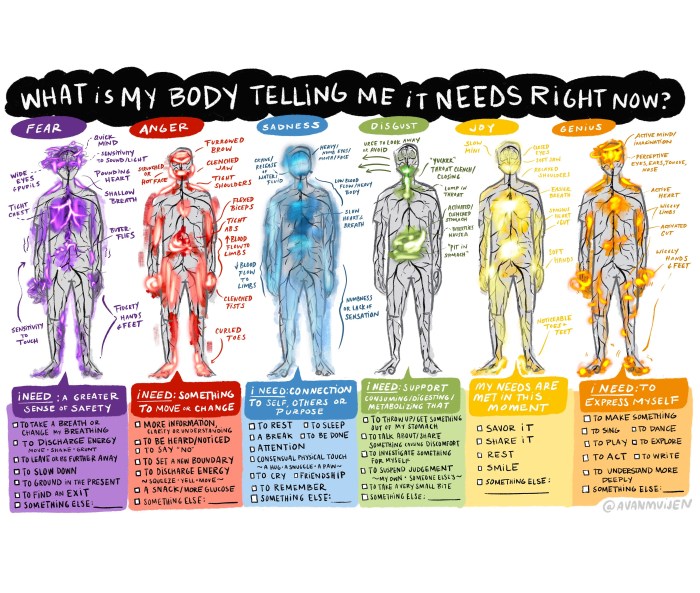
In conclusion, understanding herpes rashes involves recognizing their various manifestations, causes, and treatment options. Proper diagnosis and early intervention are crucial for effective management and minimizing long-term complications. Remember, seeking medical advice is always the best first step if you suspect a herpes rash.
